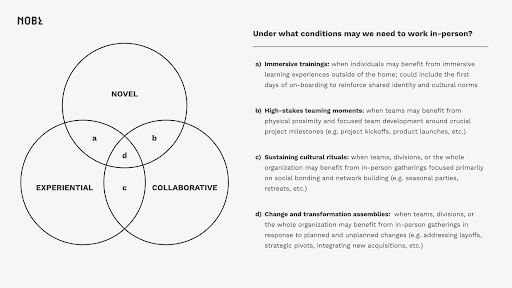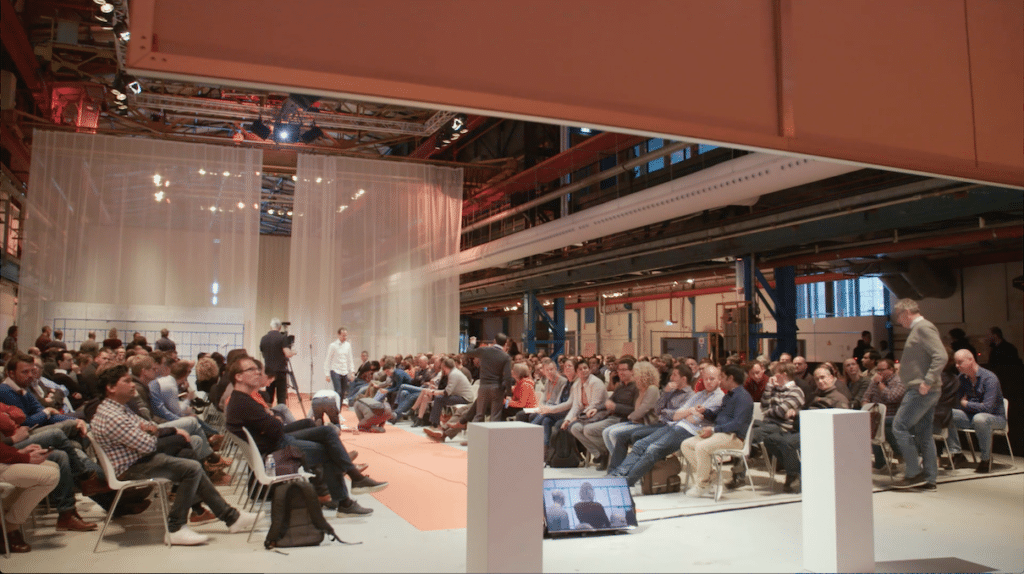

January 18, 2024
Great cultures ,Hacks
Almost everything about a culture is different. There are different positions, salaries, skills, genders, races, backgrounds. With all these different perspectives, how can we all agree on reality? What can we call the “single source of truth”?
Some say it’s values but values can change, and people can interpret them differently. In a toxic culture, values can actually be weaponized.
When I present this in a class, I ask, “What can we all agree on that is real?” And of course, everyone looks confused. So I hold up a blue pen, and ask, “Is this pen blue?” Everyone says yes, but if someone is color blind, they would say no. So what reality can we all agree on?
I’ve only found one thing: Time.
We all might have different relationships to time, but when it’s 10:30am Pacific time, no one disagrees with that statement.
So why is this important, and what is the culture hack relating to time?
It’s important because it’s a single truth that we can all navigate around. The highest performance cultures (think: Navy Seals), put a high and precise value on time because it’s a critical coordination point.
For companies, the highest performers:
– Start meetings on time
– End meetings early
– Deliver on deadline
On time is very clear. You’re either on time or you’re not.
The most powerful leaders I’ve worked with are always on time. And people think it’s because of respect, but it’s much more than that. It’s because of agency and control. At Zappos, Tony Hsieh was always on time (both personally and professionally). He never once said, “Sorry I’m late, Jeff Bezos held me back at the meeting.” No, he would have literally walked out before that happened.
What that does is convey confidence to a team that their leader is in charge and not being controlled by other forces or people. It gives people a sense of peace and confidence to know the leader is in fact in control.
Also, when we’re late, it’s like we’re trying to bend reality to our own needs and that never works out well.
As a leader, by setting a high standard of being on time, the rest of the company follows, meetings flow well, and projects get delivered on time. And make sure to start the meetings on time, regardless of whether everyone is there. Delaying a meeting caters to the least conscientious people in the company. And starting it on time ensures everyone will show up the next time on time.
Don’t believe me? Try it out for yourself. Try not only being on time. Try being early. Why? Because if you go for on-time, you’re stressed about getting everywhere exactly on time. If you arrive early, it frees your mind to think about more productive thoughts. And it sets an example by leading by example. Everyone will start arriving early, meetings will start on time with everyone there. The purpose of the meeting will be achieved without stress or wasted time.
August 28, 2023
Great cultures ,Hacks ,Hiring
In a recent WSJ profile of the CEO of Uber, Dara Khosrowshahi was asked what he looks for when hiring a new team member. Here is his answer:
What I look for above all else is followership. I want to know who they’ve hired, who they’ve developed, because ultimately, you get exponential benefit, not just based on the individual, but everyone they’ve hired and developed.
This an amazing insight, because it goes beyond asking if they have management experience, and makes them tell stories about specific people. In other words, it’s hard to fudge it.
File this one under “Interview Hacks.”
August 14, 2023
Culture of Chaos ,Great cultures ,Productivity
The question in hybrid work is when should we bring people to the office instead of letting people stay at home?
The brilliant people at NOBL figured out a great model, based on what type of work actually needs to be accomplished (which is so refreshing compared to dialogue about how many days).

Novel:
The task or challenge is new; there may not be an established process. When it’s new, there can be a lot of fear and anxiety and it’s easiest to relieve emotional discordance in person. It’s also very hard to read tone over the text of email or Slack. This is where hybrid work switches to in person.
Experiential:
An immersive experience can possibly be more effective. This is especially helpful if you do anything tactile.
Collaborative:
When tasks require sustained synchronous participation among a group. So obvious and yet with hybrid work, everyone is still obsessed with staying at home. It’s truly hilarious that Zoom is having trouble getting people to come into the office. The problem is they haven’t created a great collaborative culture such that people actually want to come to the office. (There’s a lot of room for creativity here).
Hybrid work culture can include: team building, annual strategy meetings, and change initiatives. And remember, if it’s important, put it on the calendar!
Going into the office is supposed to be a great experience! Where are you falling short?
I’ll tell you one way is to upgrade the coffee. I need to do an article on this because the CEO of United Airlines recently said that what motivated him to start making serious changes was hearing the airplane stewards say they were tired of apologizing for the bad coffee.
As always, remember that culture is co-created. So don’t think you have to figure this out all on your own. You can crowdsource the ideas and then experiment.
July 25, 2023
Great cultures ,Hacks
It’s very in fashion these days to have “unlimited vacation” at high performance companies – and yet it doesn’t matter because those people rarely take vacations. In mediocre companies, employees will play games with their vacation days and even get compensated for the days they don’t take.
The problem is that everyone sees vacations as a luxury, as opposed to a productivity hack that helps the company.
Think about it this way – Do you usually get more or less done right before a vacation? A lot, right?
Try this out:
Pull each person aside and say, “I’d like you to plan your vacation that you’ll take 3 months from now.” It will probably make them nervous, but explain to them that:
a) This will make them more productive so they will get things done before the vacation starts and
b) It helps the team because if anyone is so crucial they can’t even miss a week, then the team is not resilient. This forces the team to be resilient by making sure the operations are covered.
So go ahead, while it’s on your mind. Set up those meetings to ask people to proactively schedule their vacations.
April 28, 2023
Great cultures ,Hacks ,Tools
Everyone says, “How do you get buy-in?” But that’s the soft equivalent of manipulation when we try to “get” people to do anything. What’s more powerful, respectful and lasting is invitations. And there’s a certain way to do them…
February 2, 2023
Culture of Chaos ,Great cultures ,Vision

Employee Engagement has always been the talk in HR and culture circles. And I’m glad that’s the word rather than “happiness.” I think we’re all responsible for our own happiness. But leaders can create a very engaging work environment. In some of the strongest work cultures, people aren’t always having fun, but they always care. They’re dedicated, and they’re focused. They act like they’re owners of the business.
Employee Engagement is not surveys (that usually just stay in Google Docs).
It’s not get-to-know-you games.
It’s not gifts and recognition.
It’s simply real and honest conversation.
That said, it needs a structure to create safety for the truth to emerge. The best way I know is an open source format that anyone can use. It’s called Open Space. Check it out…
www.OpenSpace.events You can follow the manuals there, or I’m happy to run an Open Space (and train you to do it without me). It can even be done virtually.